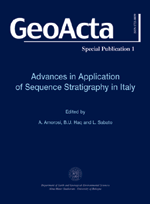GeoActa Special Publication 1
2008


Acquisto online |
GeoActa
an international Journal of Earth Sciences
|
|
Maciej Major1 and Roman Cie?li?ski2
1 Adam Mickiewicz University of Pozna?, Institute of Geoecology and Geoinformation. Dzi?gielowa 27, 61680 Pozna?, Poland. E-mail: tygodnik@amu.edu.pl
1 Gda?sk University, Institute of Geography, Department of Hydrology. Ba?y?skiego 4, 80952 Gda?sk, Poland. E-mail: georc@univ.gda.pl
|
|
|
Weather conditions, their effect on the chemical composition of surface water in closed basins and their consequences for water management: The case of the upper Pars?ta and Potok Oliwski catchments (Northern Poland)
|
|
|
|
|
|
|
|
PDF (1 MB)
|
Abstract
Basins without outlets are a permanent element of the landscape of Northern Poland affected by the Last (Pleistocene) Glaciation. These basins were the object of a detailed field research carried out in the years 2006-2007 in the upper Pars?ta and Potok Oliwski catchments, where they occupy a substantial proportion of the area. It was found that the prevailing weather conditions had a notable effect on the chemical composition of the surface water in the kettle ponds examined. As elements of the hydrographic network, basins without outlets are of vital significance for human management and perform many functions in the natural environment. The most important include hydrological (e.g. retentive), ecological (biocenotic and physiocenotic), as well as historically determined economic functions. That is why an attempt was made to assess their impact on man's water management.
Keywords: Weather conditions, Areas without outlets, Chemical composition, Hydrogeochemical types
|
|
|


